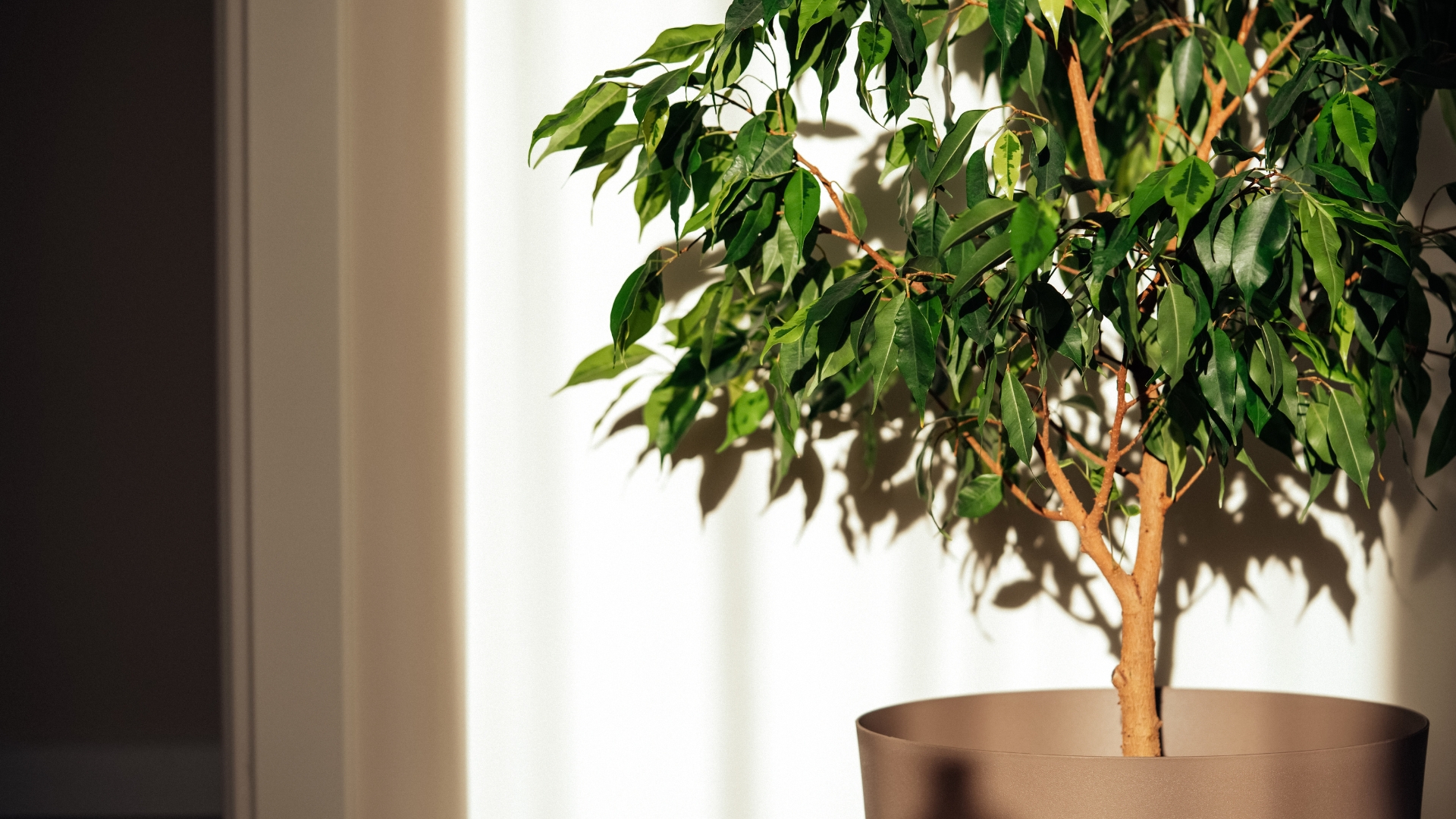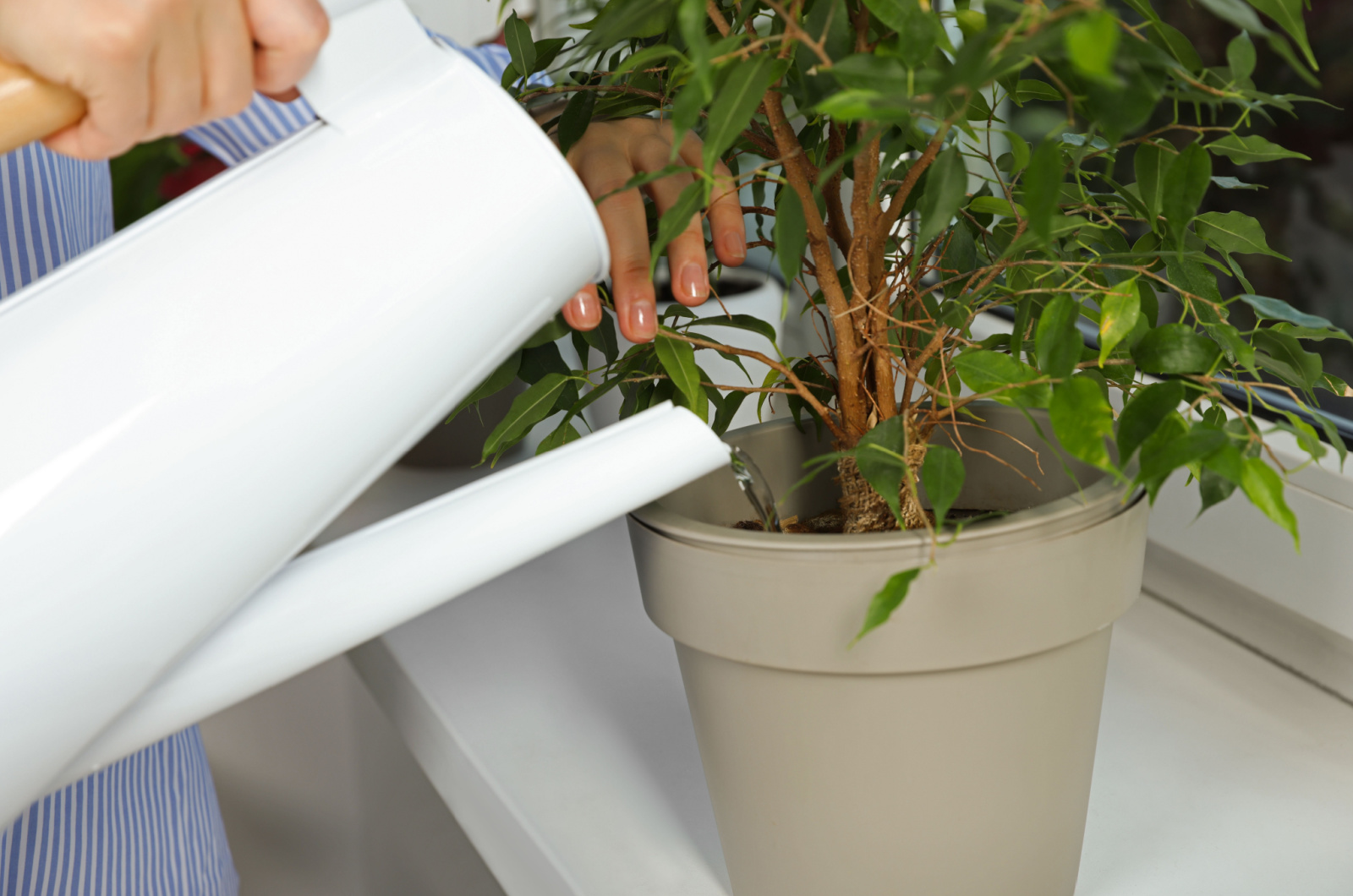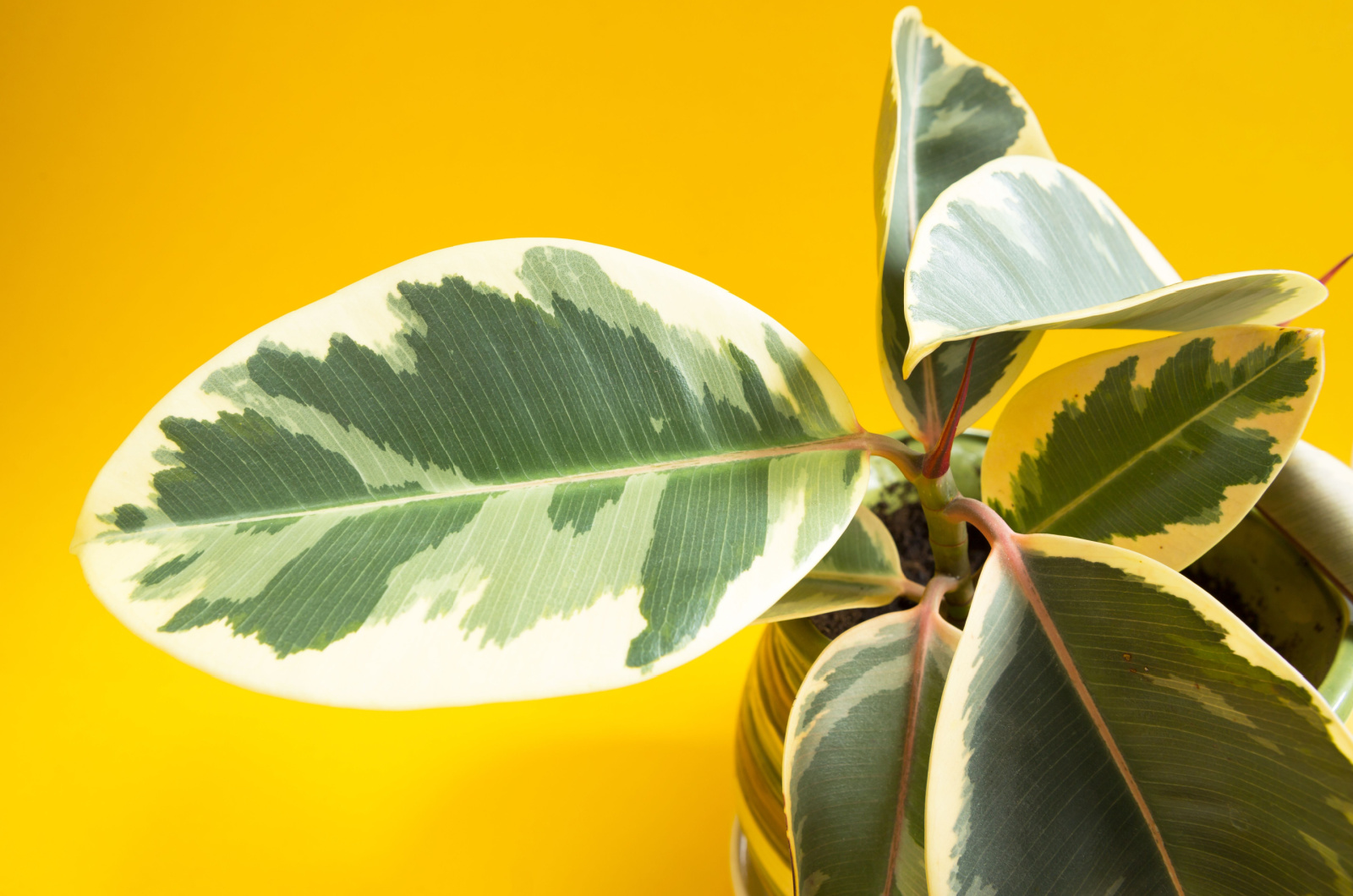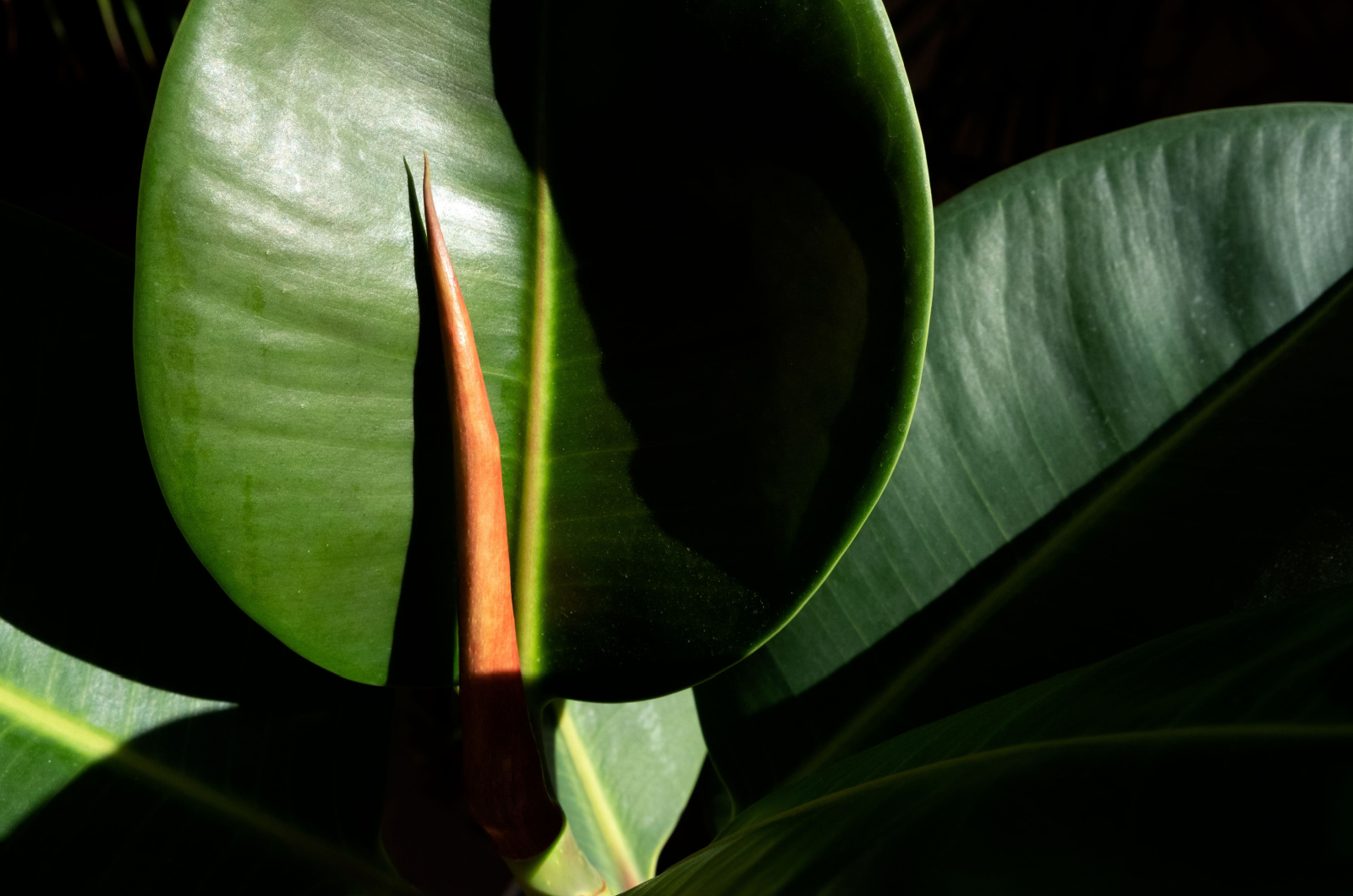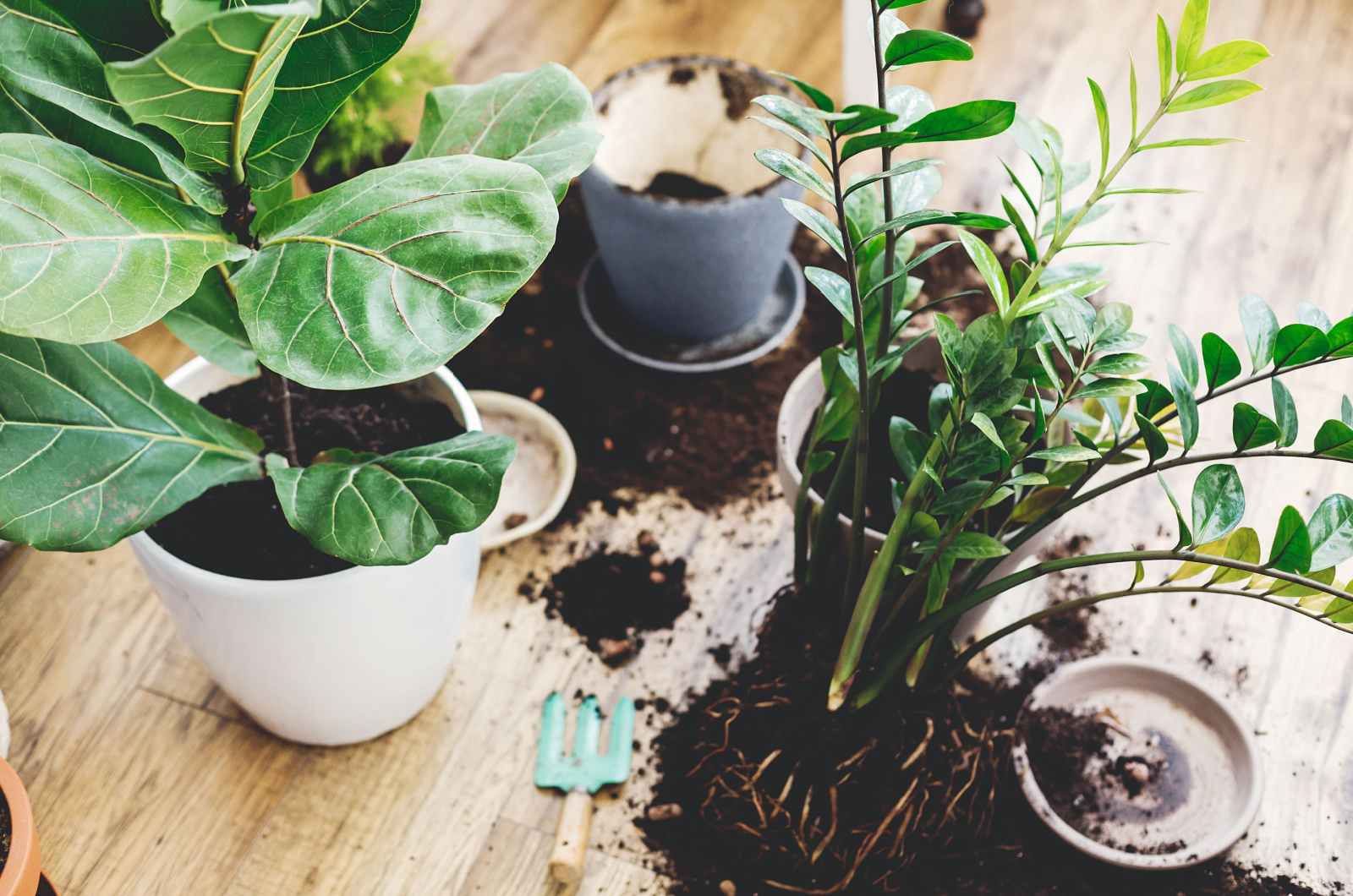The ficus, with its glossy foliage and relatively easy plant care, is a popular indoor companion all around the world. However, ficus trees come with their share of problems, such as leaf drop.
Pests, diseases, low light, incorrect watering, and sudden temperature changes can all be a part of this issue. It’s crucial to figure out what is causing your ficus tree to drop leaves and fix it accordingly.
In this article, we are going to cover all the possible causes and offer some solutions. Let’s keep those leaves where they belong!
1. Inadequate Watering
Ficuses are known to be one of the most low-maintenance indoor trees, with pretty straightforward plant care. However, watering it might be kind of tricky because they can’t handle water inconsistency.
For instance, they can tolerate drought, but they won’t do well if you regularly water them for a month and then completely dry them out the next month.
Overwatering and underwatering can lead to ficus leaves curling and yellowing, as with any other houseplant.
An underwatered ficus loses its structure, which leads to wilting and leaf drop. An overwatered ficus has damaged roots and limited airflow in the soil, leading to the same issue.
How To Fix
Carefully figure out the watering routine – water your ficus when the top half of the soil has dried out.
Fix underwatered ficuses by giving them a thorough watering in a bath or sink. An overwatered ficus should be left to dry out completely before watering it again. In case of root rot, repotting and trimming the affected roots is required.
This might be helpful: What Are Root Rot Symptoms + Causes, Treatment & Prevention
2. Sudden Changes
Sudden changes in their environment can also cause leaf drop. Temperature and humidity fluctuations are often to blame.
Leaving the doors open or changing the location of your ficus might all lead to leaf drop.
How To Fix
Gradually acclimate your ficus to new conditions. Avoid abrupt changes and provide a stable environment to minimize stress.
Try keeping constant temperatures of around 75 degrees Fahrenheit and moderate humidity. Also, don’t keep your ficus in a place where the light suddenly changes.
3. Pests & Diseases
Pesky pests and plant diseases are often the reasons why many plants are suffering. Sap-sucking insects can damage the internal structure of the plant, leading to discolored and droopy leaves.
Spots on the leaves are often signs of plant diseases. These are less common for indoor plants, but they can still negatively impact their growth.
How To Fix
Regularly inspect your ficus tree for pests like scales, spider mites, and mealybugs. Treat any infestations with neem oil or insecticidal soap. Don’t spray your ficus with a strong water stream.
Isolate the plant until the problem is gone. This will prevent spreading of the disease and pests to the nearby plants. Treat plant diseases with neem oil or fungicide.
4. Low Light Settings
Although ficus trees are known for tolerating low light conditions, it doesn’t mean that you should keep them in complete darkness.
Don’t keep your ficus tree in a room with only one north-facing window. Keeping them far away from the light source might also lead to leaf drop. Small new leaves and stretching stems will tell you that the light is probably the issue here.
How To Fix
Simply keep your ficus tree next to an east-facing window. They will receive enough direct sunlight in the morning and then thrive in bright, indirect light for the rest of the day.
Leaf drop might be caused by suddenly moving your ficus tree to a brighter location. They’ll need some time to adapt and look as good as new!
5. Repotting
Their roots are disturbed when repotting, and ficuses don’t like that!
Exposing their roots to air and not handling them with care might lead to plant stress and leaf drop. Switching to a different potting mix can also be the causative factor, so you’ll have to wait until the ficus adapts to its new container.
How To Fix
You can’t just skip repotting altogether, especially if your ficus has grown quite big. However, there are some steps you can take to avoid transplant shock.
For starters, you should choose a container that is larger than the current one. The new container for your ficus tree should also have drainage holes in the bottom. Take a look at the current soil and try to match the new soil mix.
Avoid exposing their delicate roots to air for too long and water immediately after repotting. Then, put your plant in the same spot to limit possible stress.
Related: 11 Tips That Will Prevent Transplant Shock When Moving Perennials

